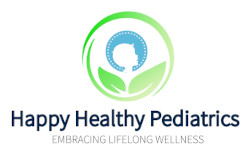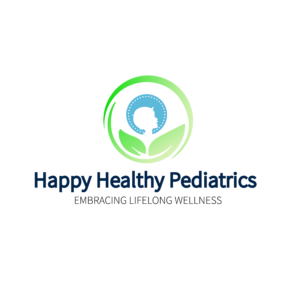Holistic Approaches to Treating Diaper Rash: A Pediatrician’s Perspective
One common concern that many parents face in the early stages of their child’s life is diaper rash.
While it’s usually a temporary issue, it can cause significant discomfort for babies, leaving many
parents seeking quick and effective solutions.
In this post, I’ll share approaches to treating diaper rash that balance conventional wisdom with
natural remedies.
What is Diaper Rash?
Diaper rash is irritation of the skin in the diaper area. It’s often caused by prolonged exposure to moisture, friction, and irritants like urine or stool. It can range from mild redness to more severe, inflamed skin that may even peel or break open. While diaper rash is common, certain babies may experience it more frequently, and when left untreated, it can become a source of distress for both baby and parents.
Conventional Treatments
The most common treatment for diaper rash is the use of barrier creams or ointments containing zinc oxide, petroleum jelly, or other soothing agents. These products are effective at protecting the skin from moisture and preventing further irritation. However, many parents are looking for more natural, less chemically-laden alternatives.
Holistic Approaches to Diaper Rash
1. Frequent Diaper Changes & Air Exposure
One of the first steps in treating diaper rash is ensuring that the diaper area is kept clean and In the first few days, parents may find that more frequent diaper changes are necessary to avoid prolonged exposure to irritants. Letting your baby’s skin air out after diaper changes (even for just 10–15 minutes) is also essential. Fresh air helps the skin heal and prevents moisture from being trapped in the diaper area.
2. Natural Barrier Ointments
Instead of conventional diaper creams that may contain artificial fragrances or chemicals, consider using natural oils and balms. Some of the best options include:
- Coconut Oil: Known for its anti-inflammatory and antimicrobial properties, coconut oil can provide a natural barrier against It’s also gentle on the skin and may reduce redness and discomfort.
- Calendula Cream: Calendula is a soothing herb with anti-inflammatory and antimicrobial properties. Using a calendula-infused cream or ointment can be beneficial for healing irritated
- Shea Butter: Rich in vitamins A and E, shea butter helps to hydrate and soothe the skin, promoting healing.
3. Oatmeal Baths
Oatmeal is a natural anti-inflammatory and can help relieve itching, irritation, and redness. Adding colloidal oatmeal (finely ground oatmeal) to your baby’s bath can provide soothing Simply add a cup of colloidal oatmeal to warm bathwater and let your baby soak for 10–15 minutes. This gentle remedy can calm inflamed skin and help reduce irritation.
4. Herbal Remedies
Certain herbs can support skin health and reduce inflammation, offering a gentle solution for diaper Herbal teas made from chamomile or lavender can be used topically to soothe the skin. These herbs are known for their calming, anti-inflammatory properties and may help accelerate the healing process. Steep the herbs, allow them to cool, and use a clean cloth to apply the tea to the affected area.
5. Probiotics and Diet
In some cases, diaper rash may be exacerbated by yeast overgrowth, especially in warm, moist environments. If you suspect a yeast infection, introducing probiotics (beneficial bacteria) into your baby’s diet may help maintain a healthy balance of microbes, potentially reducing the likelihood of yeast-related rashes. If your baby is breastfeeding, incorporating probiotic- rich foods into your own diet (such as yogurt or fermented foods) can also have a positive effect.
6. Avoiding Harsh Chemicals
Many conventional diaper wipes and lotions contain alcohol, fragrances, and other chemicals that can irritate sensitive Opt for gentle, alcohol-free wipes, or consider using a soft washcloth with warm water to clean your baby during diaper changes. The fewer chemicals your baby is exposed to, the better their skin will respond.
When to Seek Medical Attention
While diaper rash is typically a mild and self-limiting condition, there are instances when medical intervention is necessary. If the rash becomes severe, doesn’t improve with home treatment, or if your baby develops fever, blisters, or signs of infection, it’s important to consult with your pediatrician.
Sometimes a rash may be caused by a fungal infection (such as a yeast infection) or bacterial infection, both of which may require specific treatments.
Diaper rash is an unavoidable part of infancy, but it doesn’t have to be a source of stress. By combining conventional care with natural, integrative remedies, parents can support their babies’ healing process while minimizing the use of harsh chemicals. Remember to keep the skin clean and dry, provide plenty of air exposure, and consider natural options like coconut oil, calendula, and oatmeal baths. These simple yet effective practices can help soothe the skin and promote healing, allowing your baby to feel more comfortable. As always, if you have any concerns or your baby’s rash isn’t improving, don’t hesitate to reach out to your pediatrician for further guidance. Every baby’s skin is different, and personalized care is key to ensuring the best outcome.
What other holistic remedies have worked for your little one? Feel free to share your experiences in the comments below.

